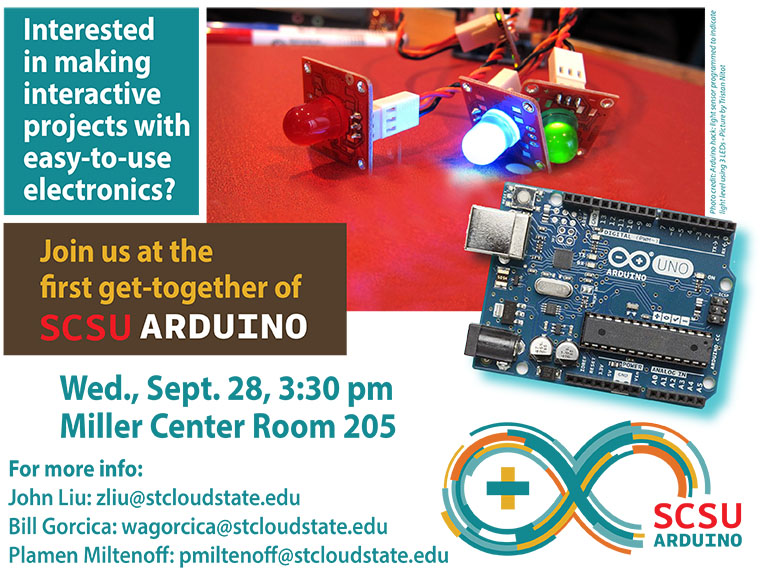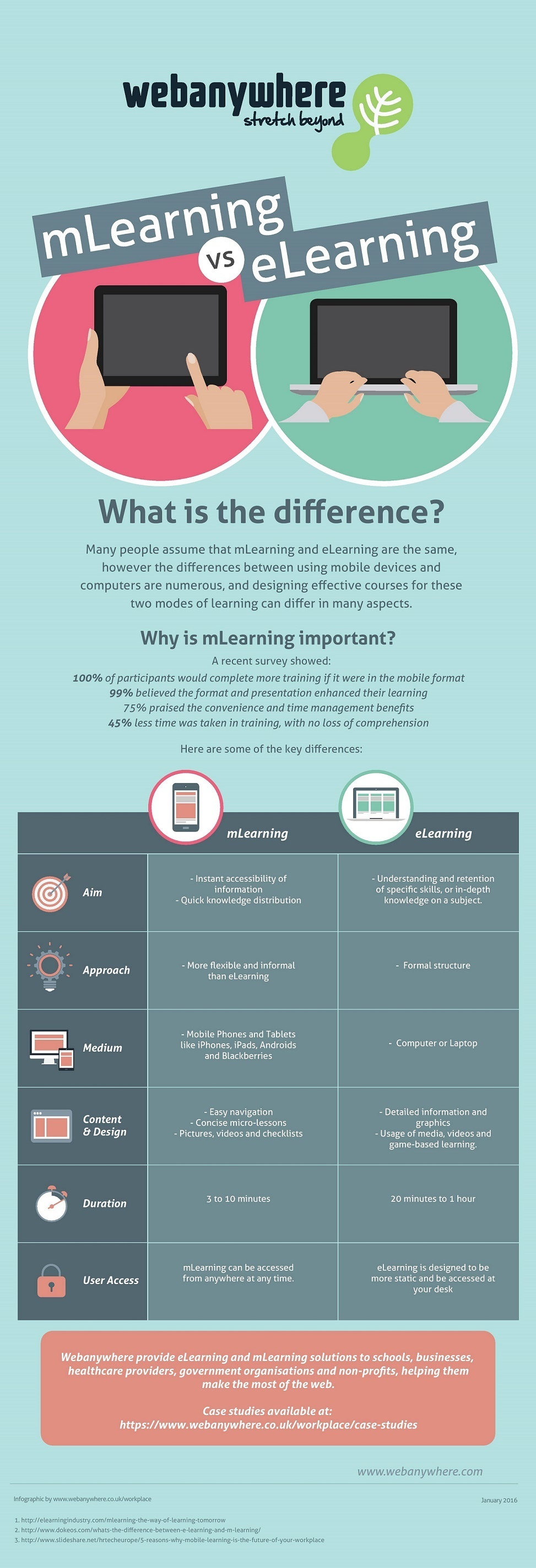Arduino SCSU session
Dr. John Liu with the Physics Department demonstrating Arduino
for more details: http://blog.stcloudstate.edu/arduino/2016/09/21/arduino-get-together/
Digital Literacy for St. Cloud State University
Dr. John Liu with the Physics Department demonstrating Arduino
for more details: http://blog.stcloudstate.edu/arduino/2016/09/21/arduino-get-together/
We know that many of you have been interested in exploring Turnitin in the past, so we are excited to bring you an exclusive standardized price and more information on the roll out of Feedback Studio, replacing the Turnitin you have previously seen. We would like to share some exciting accessibility updates, how Feedback Studio can help faculty deliver formative feedback to students and help students become writers. Starting today thru December 31st non-integrated Feedback Studio will be $2.50 and integrated Feedback Studio will be $3 for new customers! Confused by the name? Don’t be! Turnitin is new and improved! Check out this video to learn about Feedback Studio!
Meet your exclusive Turnitin Team!
Ariel Ream – Account Executive, Indianapolis aream@turnitin.com – 317.650.2795
Juliessa Rivera – Relationship Manager, Oakland jrivera@iparadigms.com – 510.764.7698
Juan Valladares – Account Representative, Oakland
jvalladares@turnitin.com – 510.764.7552
To learn more, please join us for a WebEx on September 21st. We will be offering free 30 day pilots to anyone who attends!
Turnitin Webinar
Wednesday, September 21, 2016
11:00 am | Central Daylight Time (Chicago) | 1 hr
Meeting number (access code): 632 474 162
https://mnscu.webex.com/mnscu/j.php?MTID=mebaec2ae9d1d25e6774d16717719008d
+++++++++++++++++++
my notes from the webinar
I am prejudiced against TI and I am not hiding it; that does not mean that I am wrong.
For me, TurnitIn (TI) is an anti-pedagogical “surfer,” using the hype of “technology” to ride the wave of overworked faculty, who hope to streamline increasing workload with technology instead of working on pedagogical resolutions of not that new issues.
Low and behold, Juan, the TI presenter is trying to dazzle me with stuff, which does not dazzle me for a long time.
WCAG 2.0 AA standards of the W3C and section 508 of the rehabilitation act.
the sales pitch: 79% of students believe in feedback, but only %50+ receive it. HIs source is TurnitIn surveys from 2012 to 2016 (very very small font size (ashamed of it?))
It seems to me very much like “massaged” data.
Testimonials: one professor and one students. Ha. the apex of qualitative research…
next sales pitch: TurnitIn feedback studio. Not any more the old Classic. It assesses the originality. Drag and drop macro-style notes. Pushing rubrics. but we still fight for rubrics in D2L. If we have a large amount of adjuncts. Ha. another gem. “I know that you are, guys, IT folks.” So the IT folks are the Trojan horse to get the faculty on board. put comments on
This presentation is structured dangerously askew: IT people but no faculty. If faculty is present, they will object that they ARE capable of doing the same which is proposed to be automated.
More , why do i have to pay for another expensive software, if we have paid already Microsoft? MS Word can do everything that has been presented so far. Between MS Word and D2L, it becomes redundant.
why the heck i am interested about middle school and high school.
TI was sued for illegal collection of paper; paper are stored in their database without the consent of the students’ who wrote it. TI goes “great length to protect the identity of the students,” but still collects their work [illegally?}
November 10 – 30 day free trial
otherwise, $3 per student, prompts back: between Google, MS Word and D2L (which we already heftily pay for), why pay another exuberant price.
D2L integration: version, which does not work. LTI.
“small price to pay of such a beauty” – it does not matter how quick and easy the integration is, it is a redundancy, which already can be resolved with existing tools, part of which we are paying hefty price for
https://d2l.custhelp.com/app/answers/detail/a_id/1668/
| Play recording (1 hr 4 min 19 sec) | |
| https://mnscu.webex.com/mnscu/ldr.php?RCID=a9b182b4ca8c4d74060f0fd29d6a5b5c | |

http://booksinbrowsers.org/program/
++++++++++++++
more on ebooks in this IMS blog
Antiquated phone networks and corporate monopolies do not produce fast Internet.
By Rick Paulas
https://psmag.com/why-is-american-internet-so-slow-98f4eeadb371#.q9v3rd42k
AT&T, Comcast, Verizon, and Time Warner have a “natural monopoly” since they’ve simply been at it the longest. While the Telecommunications Act of 1996 attempted to incentivize competition to upset these established businesses, it didn’t take into account the near impossibility of doing so. As Howard Zinn wrote in A People’s History of the United States, the Telecommunications Act of 1996 simply “enabled the handful of corporations dominating the airwaves to expand their power further.”
Chattanooga has somewhat famously installed its own. Santa Monica also has its own fiber network. The reason these communities have been successful is because they don’t look at these networks as a luxury, but as a mode of self sustainability.
The 19th century’s ghost towns exist because the gold ran out. The 21st century’s ghost towns might materialize because the Internet never showed up.
++++++++++++++
more on Internet access in this IMS blog
http://www.comets.iastate.edu/sites/default/files/reports/LectureCaptureOverview.pdf
+++++++++++++++
more on lecture capture in this IMS blog
https://campustechnology.com/articles/2016/09/01/global-elearning-market-in-steep-decline.aspx
a recent report released by Ambient Insight Research, a Washington state-based market research firm.
Revenues for self-paced e-learning in 2016 are heavily concentrated in two countries — the United States and China. The growth rate in the U.S. is at -5.3 percent, representing a $4.9 billion drop in revenues by 2021, while in China, the rate is at -8.8 percent, representing a $1.9 billion drop by 2021. The e-learning market in China has deteriorated rapidly in just the last 18 months, the report said.
Self-paced e-learning products include online courses, managed education services, managed training, e-books and learning management systems, according to the report. The author does not consider mobile and game-based learning, which are growing, to be in the self-paced e-learning category.
The news on the self-paced e-learning industry is so bad, Ambient Insight will no longer publish commercial syndicated reports on the industry, the firm says on its website and in the report.
++++++++++++++++
more on elearning in this IMS blog

++++++++++++
more on mlearning
https://blog.stcloudstate.edu/ims?s=mlearning
and
elearning
https://blog.stcloudstate.edu/ims?s=elearning
in this IMS blog
https://globaldigitalcitizen.org/26-critical-thinking-tools-aligned-with-blooms-taxonomy

+++++++++++++++
more on the bloom digital taxonomy in this IMS blog
By David Nagel
VR’s applications for education have been much lauded, and tech heavyweights have begun investing in the technology, in part to both enable and capitalize on educational opportunities. Google, for example, has been offering its low-cost Google Cardboard kits, which, coupled with the Google Expeditions service, provides VR-based educational experiences and learning activities.
according to market research firm ABI Research, some 6 million consumer and prosumer cameras are expected to ship by 2021. (That’s out of a total of 70 million VR devices that are forecast to ship by then.)